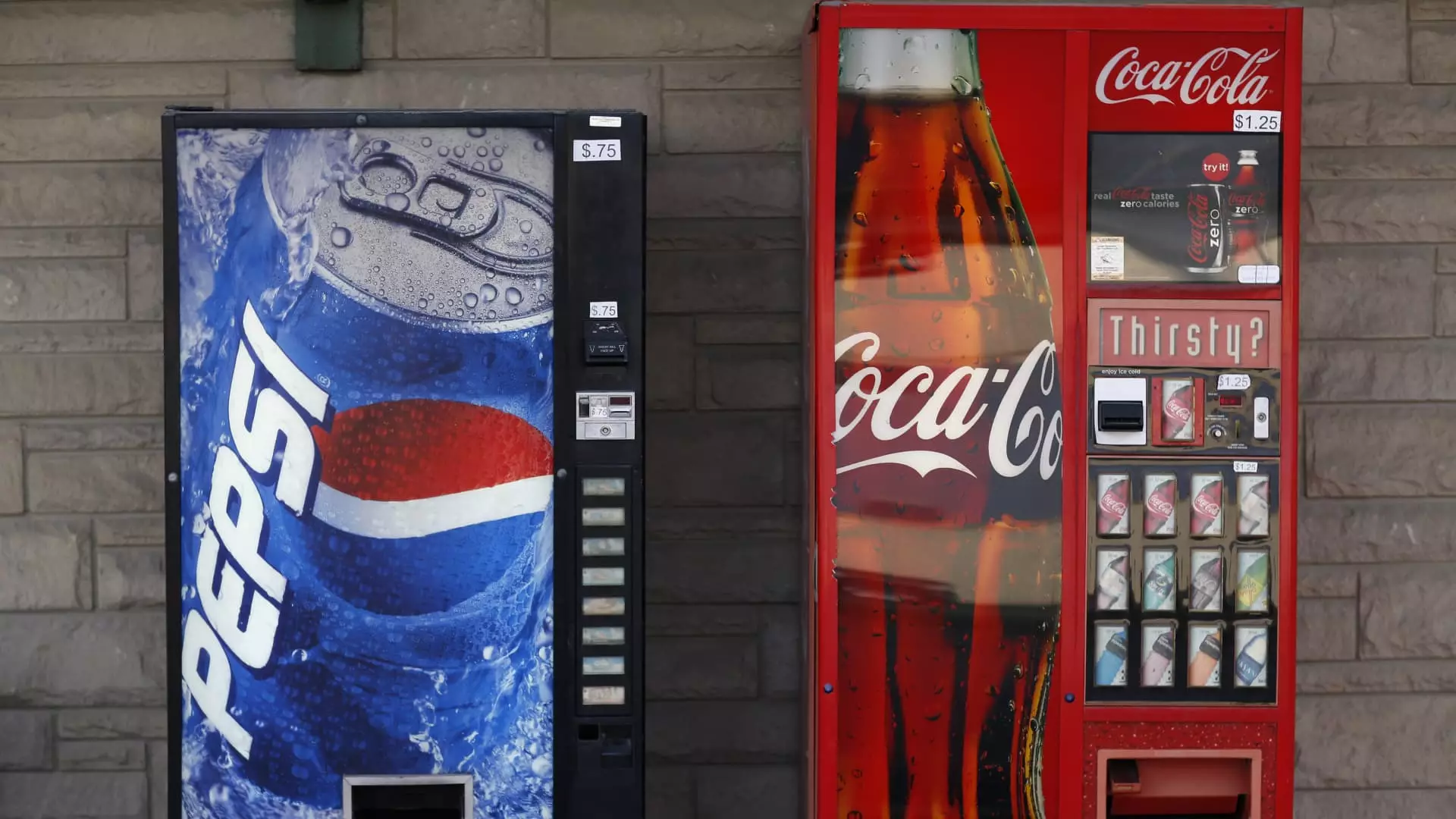Coca-Cola and PepsiCo, two long-standing rivals in the beverage industry, have consistently faced off against each other for decades. However, when it comes to market performance, Coke has continuously emerged as the top contender. Even in a challenging year marked by higher interest rates and concerns over weight loss drugs like Wegovy, Coke has managed to surpass Wall Street’s estimates for the third quarter and raise its full-year forecasts, outshining Pepsi by approximately $20 billion in market capitalization. But what are the key factors that have given Coke the edge over Pepsi?
One important aspect where Coke seems to have the upper hand is in raising prices across its product portfolio. Starting in the spring of 2021, Coke initiated price increases, and PepsiCo soon followed suit with its own price hikes in the summer. Both companies have reported that these higher prices have boosted sales, with Pepsi planning a “modest” increase next year. However, there is a significant difference in the timing and magnitude of these price increases. While Coke’s North American drink prices rose by only 5% in the third quarter, Pepsi saw a 12% increase. This divergence in price hikes could explain why Coke managed to avoid a significant drag on volume, while Pepsi experienced a decline in beverage volume.
Another area where Coke has gained an advantage is in its ability to win over shoppers with its drinks. For quite some time now, Coke has been gradually taking market share from Pepsi. RBC Capital Markets analyst Nik Modi suggests that Coke’s success in this area stems from its strong performance in the soda category, while Pepsi has been focusing on revitalizing its non-soda brands like Gatorade. As a result, when the beverage business falters for Pepsi, its Frito-Lay unit, which includes popular snacks like Cheetos and Doritos, typically comes to the rescue. However, snacking has slowed down as consumers seek more affordable options due to Frito-Lay’s double-digit price increases. Shoppers are turning to private-label brands or opting to consume leftovers, negatively impacting Pepsi’s North American drink volume.
Away-from-Home Purchases and International Markets
Coke’s strong performance can also be attributed to its success in away-from-home channels, such as movie theaters, dining establishments, and other leisure activities. During the pandemic, these channels experienced a decline, but in the third quarter, they rebounded faster than at-home business for Coke. CEO James Quincey noted that there is still strong growth in away-from-home channels, including amusements, travel, leisure, and hospitality. This recovery in away-from-home purchases could be a result of consumers trading down to more affordable options, such as quick-serve fast-food restaurants, where Coke has a significant presence. For instance, McDonald’s, a long-time partner of Coke, has benefited from diners trading down to its restaurants, boosting its U.S. sales.
In contrast, Pepsi lags behind Coke in the away-from-home business, although it does have partnerships with large restaurant companies like Yum Brands, the owner of Taco Bell. However, the size of this business segment has not been disclosed. Furthermore, Coke enjoys a larger international presence compared to Pepsi. Roughly 60% of Coke’s revenue comes from international markets, while only 40% of Pepsi’s sales are derived from outside of the U.S. This greater exposure to international markets has been beneficial for Coke. Despite sluggish domestic demand, particularly in Pepsi’s North American beverage segment where volume declined by 6%, Coke’s stronger growth in international markets has helped offset any weaknesses.
It is important to mention that this international success is not without challenges. Markets like Argentina and Turkey, which have experienced hyperinflation, have forced Coke to raise prices even after pausing hikes in the U.S. and Europe. Additionally, the strength of the dollar has impacted Coke’s sales and earnings more than previously anticipated this year due to unfavorable currency exchange rates.
The Bottling Advantage
One notable distinction between Coke and Pepsi lies in how they bottle their soda. Coke collaborates with independent bottlers who have a deep understanding of their markets and the autonomy to make informed decisions for their businesses. In contrast, Pepsi owns over three-quarters of its North American bottling operations. While this strategy allows Pepsi to exert more control and reduce costs, it also necessitates substantial resources and capital allocation to support its bottling operations. This becomes a challenge, given the declining demand for soda over the past two decades. As a result, this difference in bottling approaches is reflected in their respective performance, with Coke maintaining an advantage in this area.
Coke’s success over Pepsi can be attributed to various factors, including its strategy of raising prices and winning over shoppers, its focus on away-from-home purchases and international markets, and the advantage of working with independent bottlers. While both companies have faced headwinds in the industry, Coke has managed to navigate these challenges with greater success. As the beverage rivalry continues, it will be interesting to see how both companies adapt their strategies to remain competitive in a rapidly evolving market.


Leave a Reply